This preview was originally published on ZeldaChronicles (formerly known as ZeldaEurope) and got translated for this blog in 2022 by the same author.
After having the opportunity to play the Legend and Adventure Modes of Hyrule Warriors early, let's provide you with a spoiler-free first-look for the game. This preview will tell you how the battles unfold and what you can expect from Hyrule Warriors as a Zelda fan.
There won't be any details about the story or the missions, so you can read this article without any concerns. It's also aimed at Zelda fans who have never played any other Warriors game before, like Dynasty Warriors, Samurai Warriors, or One Piece: Pirate Warriors.
Let's start with the obvious: it's not a typical Zelda game, where you beat dungeons or solve puzzles, but it's primarily based on the Dynasty Warriors gameplay as known from Koei Tecmo – a strategic action game, where you fight your way through the battlefield as a one-(wo)man-army. This formula has now gotten a Zelda coating, creating some ripples amongst the fans.
In Hyrule Warriors different characters and places from the entire Zelda universe are brought together as fighters and battlefields in a war between good and evil. It's essentially a "Zelda All-Stars", where the gameplay of Dynasty Warriors was used as a platform to make it happen.
Into Battle!
The game puts you right onto the first battlefield around Hyrule Castle, where you will instantly notice the countless troops: a large amount of Bokoblins fights against Hylian soldiers and Gorons. But they don't feel like much of a threat when compared to their counterparts from Skyward Sword, which used to hit you all at once for some real danger, especially during that game's infamous horde battle. You will notice a swing here and there, but for the most part they simply act as harmless cannon fodder. This is part of the gameplay, however, and you quickly get used to taking out dozens of enemies in a single blow. Yes, it's even a lot fun.
More crucial to the battle are the various captains, which are stronger foes, like Lizalfos, Stalfos, Big Poes, or Moblins. They can take more damage and will also attack you directly, where a little bit more skill is required to defeat them. If you do so, this will also shatter their unit of smaller foes. Stronger enemies can be targeted and also have a health bar above them, which sets them apart (though you can activate health bars for every single foe via the settings).
The real stars are the commanders, however, who lead the battle and are the main characters of the game. This includes Link, who quickly rises from a recruit to the hope of Hyrule, the powerful Sheikah warrior Impa, but also Princess Zelda, who for the first time is presented as a capable fighter and leader. The troops of evil on the other hand are initially commanded by the dragon knight Volga, the dark mage Wizzro, and their mistress Cia.
The goal is often to take out the enemy commander of the opposing forces, who are in no way inferior to your own combat power. Because of this you get a mix of fighting through hordes of monsters like in Hack 'n' Slay and more classic duels. This goes even hand in hand, because the smaller foes will provide you with goodies for fighting against the stronger ones.
In addition, Hyrule Warriors also utilizes powerful bosses, like King Dodongo or Gohma. They appear more threatening than ever when they tear through dozens of troops with their gigantic claws. With their armored bodies they also take only very little damage from normal attacks, but you can expose their weak points with the right item in typical Zelda fashion, which lets you deal critical damage.
These items include the Bombs, the Bow, Boomerang and the Hookshot. You will obtain them during the course of Legend Mode and keep them forever, which means that you will have them already in your inventory at the start of any upcoming battle. Items like the Bombs can also be used infinitely, so you don't have to search for any whenever a King Dodongo shows up or there some rocks in your way.
The power-ups for the items are temporary, however, which are sometimes dropped by defeated enemies or found in pot. The Power-Up Bombs for example let you blow up dozens of enemies at once, but only for a short amount of time.
Unfortunately, you're also the only character during the battle to be able to use these items. Other fighters are simply unable to fight against the big bosses or get past certain obstacles, which means that you are usually the key to victory. Without your help nothing much will get accomplished, so you can't expect your allies to get the job done for you, while you explore the environments in peace. They can be useful here and there, but this is the exception, not the norm, so you're the driving force for the most part. This can also be stressful whenever you have to be like at five places at once and then make strategic decisions about what requires your immediate attention and what may still wait a while.
For this you're also constantly communicating with your allies, no matter where there are on the battlefield. The fairy "Proxi" talks for Link, who is as mute as we know him, while all other characters can speak for themselves via text boxes. This creates an interesting atmosphere, where you feel like a part of a greater whole, but also like a real hero. That's something that Hyrule Warriors does better than most Zelda games, where the NPCs are usually more passive. You are fighting side by side with Princess Zelda and other characters, which is a rarity from the Zelda series that here becomes your daily business.
Collect & Conquer
All those troops, monsters, and commanders don't just run around aimlessly, of course, where there are keeps and outposts all over the battlefield, which want to be captured. The small outposts only consist of a small number of enemies and one easy-to-beat captain, where you only need to defeat said captain. But the outposts are taken back by the enemy as easily, where usually these points just act as a negligible distraction.
More important on the other hand are the Keeps – those are square-shaped fortifications all over the battlefield, which often act as crossroads between different sections of the map. Sometimes certain gates are even closed, so you have to take the keep before you can proceed. And that's not as simple as with the outposts, because the keep boss is initially hidden and only shows up after you've done a certain amount of damage on the other enemies inside the keep. Troops are constantly spawning inside them and the more you defeat, the more damage the keeps take.
Once the keep boss is fallen, the keep belongs to your side and your enemies will have to go through the same process. The game will even warn you when keeps are getting attacked and are about to fall. This is usually caused by assault troops, which are led by a bunch of captains, but your own armies can do the same thing. And the more keeps you have, the more troops you will get on the battlefield.
In the keeps you can find variety of different elements from the Zelda series, like Bomb Flowers, Beamos, and pots, where the latter may contain Rupees, hearts, or similar items. But the best thing are the treasure chests that appear in some keeps after capturing them, because in Hyrule Warriors every character gets a unique animation for opening chests, which is charming and sometimes funny.
In some battles you also have a base, the Allied Stronghold – should this special keep fall, the battle is lost, so you need to defend it at all costs. Sometimes you have other conditions of defeat, where for example you can't let certain allies flee. You can easily heal badly hurt allies by going next to them (a ring is displayed around them in such a case), but you will have to get there in time. You can't be everywhere at once, however, where this leads to one of the main challenges of the game: a lot of fires can burn at the same time and you need to make swift decisions which ones need your immediate attention and where you can make sacrifices.
And on top of all that are sidequests... During the battle you may find Heart Container, Pieces of Heart, new weapons, and even Gold Skulltulas. The latter appear somewhere on the battlefield, where it only shows a radius in the form of a spider web on the map, after you have cleared a certain criteria, mostly defeating 1000 enemies. But the Gold Skulltulas will appear for a short amount of time, which can be very distracting when there are other urgent things to do.
For the other collectibles you can usually take your time, though, and find them while exploring the battlefield, something that most Zelda fans should enjoy. Of course it's not like in a Zelda game, where you can take your time to fish, while evil waits for you. So, you always need to have an eye on the battle and try to explore whenever the situation allows for it.
Strong foes also drop materials and weapons on defeat, where it plays the short, traditional "get item" melody each time. This is fun and invites you to run over the battlefield to collect everything, while enjoying the many "ta-da-da-da-daaa" sounds. The materials and weapons only appear in the form of small bags, where it shows you the real items only after the battle. These things will also be automatically collected at the end of each battle, so you don't actually have to collect any of them, unless you want to.
Battles in Hyrule
All the things to find are not the only (amusing) elements that have found their way from the Zelda games onto the battlefield. For example you may encounter gigantic Bombchus, which automatically go to their target and can take out obstacles or instantly capture keeps. There are also Cuccos, which act like a neutral army and can spell doom for you or your enemies.
Some stages have Fairy Fountains on them, where a Great Fairy (based on the Nintendo 64 games) waits for you and helps you out with dilemmas. And just like in a Zelda game you can cut grass to refill your life or magic.
So, even though the core gameplay is based on Dynasty Warriors, the battles in Hyrule Warriors are full of gameplay elements usually found in Zelda games, which adds a unique charme. And this makes it easier to get into the battles and over-the-top action of a Warriors game, even when those games are usually not your thing.
Controls & Combos
If you're accustomed to 3D Zelda games, then it will be easy to get into Hyrule Warriors, because the controls are in many ways similar. Koei Tecmo even offers a Zelda style button layout, where you dodge and interact with A, perform normal attacks with B, and strong attacks with Y, while the cinematic Special Attacks are triggered with X. The normal Warriors style is also there, where you attack with Y and X, but this preview will use the Zelda style as a reference.
In a Warriors game you use a variety of different "combos" to attack. But don't worry, this isn't like in fighting or other Hack'n'Slash games, where you have to perform crazy inputs, it's actually rather simple. You have a chain of normal attacks, where you just keep pressing the B button, just like you would in a Zelda game. Now, at any point during this attack chain you can perform a combo attack by pressing Y. This attack will be different depending on how many normal attacks you have performed before. So, pressing BBY will result in a different attack than BY or BBBY. It's simple to learn and also allows new players to just mash buttons and see what impressive actions will unfold. And experienced players will know what combo to use in which situation.
Defeating enemies and collecting Force Fragments will fill your Special gauge, which is right below your heart meter. With the X button you can then unleash a powerful Special Attack, which lets you target a large group of enemies at once. This even freezes everything around you, so you can use it safely.
A specialty of Hyrule Warriors is also the magic meter, which only fills by collecting Magic Jars. Those can be found in the environment or are rarely dropped by enemies. Once filled, you can activate "Focus Spirit" with the R button, where your attack power and speed are enhanced, which is especially helpful in duels against stronger foes. This will continuously drain your magic, but you can extend the duration by defeating lots of enemies. For every 25 K.O.s you get some magic back, as well as certain bonuses, like more Rupees or experience points.
During Focus Spirit you can press the X button to perform a different, more targeted Special Attack, which is will reveal the weak point gauge of an enemy. This will empty your magic meter, where it's best to wait until the very last moment. Should the magic extinguish on its own, then this will cause a large area attack around you. So, next to multiple combos every character has three different special attacks, which all look very cool.
Decisive against commanders and bosses is the weak point system, however. Whenever your enemy perform certain attacks, it will leave them vulnerable for a brief moment, which is when their weak point gauge appears. Once you reach the end of this gauge with attacks, you will perform a powerful weak point attack for massive damage. With the giant bosses, like King Dodongo or Gohma, this is even the only real way of dealing damage to them, where you also have to use a certain item to reveal their weak points in good, old Zelda tradition.
Zelda fans should also get accustomed to the rest of the controls fairly quickly. The left analogue stick lets you walk around and the right analogue stick turns the camera around, like in The Wind Waker. The ZL button lets you block, but it also centers the camera right behind you. Unlike other Warriors games, you can target enemies with the L button, so they will stay in sight, which works like in any 3D Zelda game. Of course not every small foe can be targeted, only the captains, commanders, and bosses, but that's what counts. You can also switch targets with the right stick.
Here's an over view of the complete Zelda control layout:
- Left stick: walk
- A: dodge, interact
- B: normal attacks
- Y: strong attacks / combos
- X: Special Attack
- R: Focus Spirit (Magic)
- ZR: item
- L: targeting
- ZL: block and center camera
- Right stick: camera, change target
- D-pad: swap items, zoom map
- Plus: pause menu
- Minus: switch between GamePad and TV
You can also play with a Wiimote and Nunchuk, but normal attacks will be performed by swinging the remote, similar to Twilight Princess on the Wii.
Characters and Weapons
The real appeal of Hyrule Warriors is without a doubt the diverse cast of characters. In this game you won't only play as Link, but with all sorts of different characters from the Zelda universe. Next to new incarnations of Link, Zelda, and Impa, there are also a couple of characters stemming from Ocarina of Time, Twilight Princess, and Skyward Sword, which get unlocked one after another.
Before each battle you get to choose your character and their weapon. Some characters even have different weapon types, e.g. Link can use the mighty Fire Rod instead of his typical sword and shield combo. This completely changes all of Link's attacks, where these weapon types are effectively a whole other moveset.
Each weapon type also belongs to one of five elements: fire, water, lightning, light, and darkness. Here is a short explanation what they do:
- Fire Attacks cause explosions, which blow away enemies and create mighty sparks, which can hurt even more foes.
- Water Attacks create a bubble above the heads of your enemies for a while, which lets them continuously take some damage (like poisoning).
- Lightning Attacks cause more damage when they hit enemies in the air – this often gets supported by attacks that launch enemies up.
- Light Attacks cause more damage against multiple enemies.
- Darkness Attacks cause more damage against single enemies.
Next let's take a look at some of the characters to give some examples:
- Link (Hylian Sword): Link with his sword and shield is the perfect allrounder, where you can't really go wrong. His normal sword attacks deal decent damage in duels, while his different spin attacks are effective against hordes of enemies. For Zelda fans this is the perfect way of familiarizing yourself with the mechanics.
- Sheik (Harp): Sheik is an example for a more tricky character. Kunais get used for the normal attacks, while the combos create attacks for all five elements. Based on your previous combo an elemental note appears below your special meter, where your strong attack (Y) let's you play a song based on this element for different effects. For example the combo BBBY creates a lightning attack, where you then can play the Song of Storms, which will wrap you in a lightning cloud.
- Daruna (Hammer): If you just want to smash, then Darunia is your man. His hammering is slow, but powerful for some good damage on every swing. Combos will unleash explosive and fiery attacks to give your enemies hell, but you will often be left vulnerable after them.
- Fi (Goddes Sword): Fi is unique in her ability to attack while moving, which for example can be useful to attack Bombchus on their way. Her combos are also good against multiple enemies, where she can strengthen her attacks with light energy. She has a special light gauge, which can be filled with her strong attack move for a short while. But she isn't very good in duel against stronger foes.
These characters are all rich in variety, where every weapon type has its own gimmick, as well as different advantages and disadvantages. And it can be a lot of fun to give them all a try to discover your favorites, just like in a fighting game. Depending on the game mode and missions you can either freely choose between the characters or are restricted to certain ones...
Game Modes
You will battle in one of the three different modes: Legend Mode, Free Mode, or Adventure Mode (there will also be a Challenge Mode available in a free update after release, but this wasn't available for testing as of yet).
Your entry into the game is Legend Mode, where the story of the game gets told battle by battle, via cinematic cutscenes and beautiful storyboards. The latter are narrated by a real voice actress in English (with subtitles for other languages). If you're hoping for any more, then you will be disappointed, because Koei Tecmo stayed faithful to the classic combination of textbox and noises, which feels somewhat outdated here in Hyrule Warriors, but still works and his its own charm.
They certainly weren't skimping on cutscenes, where there's one for the beginning and end of each major battle. These scenarios fit the story quite well and offer also some replay value, where you will play through multiple times to find all extras, level your characters, or simply to revisit the story.
Legend Mode only lets you use the characters who actually were part of the story during the corresponding missions. If you want to play as any character, you can do so in Free Mode, where all of your unlocked fighters are available. The main fighter of the scenario will then follow you wherever you go, which can be unintentionally funny. For example you will do all of Link's work during the first battle on Hyrule Field, where he always arrived only after the dust has already settled.
Overall, the battles in Legend and Free Mode are focused on quality and replay value, so this is where the meat of the game is. But if you want more at the end, then Adventure Mode will have you covered, which is all about the quantity. It gets played on the map of the classic NES The Legend of Zelda, where each square stands for a mission. If you do the math, then that's 128 missions in total, which can keep you busy for a long time. This is also where you can unlock certain other characters, new weapon types, and stronger weapons, which can't be found in Legend Mode.
More than half of the missions in Adventure Mode are "Challenge Battles", where you are (mostly) on your own and have to solve different tasks. For example you might have to defeat a certain number of enemies or bosses within 10 minutes. Some of these Challenge Battles are also pure duels without any hordes of monsters.
Then there are "Adventure Battles", which are similar to the battles in Legend Mode, except that there are no story restrictions. This means that everyone can fight against everyone, which may lead to some weird scenarios, but also gives you the opportunity to fight against certain characters, which you normally wouldn't have to face in battle (which also helps to obtain their materials).
Winning battles will score you "Item Cards", which are classic items, like the Compass, Bombs, or the Candle. These can be used on the Adventure Map to reveal hidden rewards, like new weapons. Bombs open caves and the Candle burns trees, just like in the original. The Compass will show you the right spots to use the items, where each Item Card can only be used once. If you use on the wrong spot, it will be wasted, but you can always get new cards from (re)playing battles, so there is an infinite supply.
If you're familiar with the NES original, you can even rely on your memories (or guide maps on the internet) to save yourself some Compasses. There are also new items and hidden secrets, which didn't appear in The Legend of Zelda for some new discoveries, but these are mostly obvious because of the fact.
Finished battles in Adventure Mode will receive a score with rank of either A, B, or C. To obtain certain rewards or proceed on the map at certain points, you will need to score an A rank. And for that you will have to finish the battle quickly enough, defeat a certain amount of enemies, while not taking too much damage. This sounds stressful, but is usually quite doable, as long as your characters have the right level... Which brings us to the last topic of this preview.
Shopping and Leveling
In games with multiple fighters, like Super Smash Bros. or Street Fighter, it's usually so that you unlock them one after another, maybe give them a try and that's it. Not so in a Warriors game. Here every characters has a long-term development, controlled by yours truly.
It already starts with the fact that each character gets their own heart meter. Every Heart Container and Piece of Heart that you collect goes to a certain character, where during battle you can only open such treasure chests with the right character.
You also receive more Heart Containers by leveling your fighters from 1 up to 99, which also influences your attack power. This can make the difference between life or death in certain missions, where something that may seem impossible at first can become much more doable with ten more levels to your name.
To level up you simply need K.O.s – every defeated foe earns you XP, similar to Zelda II - The Adventure of Link or most RPGs. Bur the Bazaar also contains a Training Dojo, where you can invest your Rupees into level-ups. Those costs can go into sextuple digits, but you will earn such sums eventually and it's useful to bring the characters up to speed who you don't play as often.
The Bazaar can be accessed after each battle via the plus button, where you have other ways of strengthening your characters in the form of a menu. One of those is the Badge Market, where you can unlock different perks for your characters. The badges are the same for every character, but you'll need different materials for everyone. Some of the abilities you unlock here are as important as your level, maybe even more so, like for example additional combo attacks or upgrades to your Special Gauge. The badges are split into attack, defense, and assist categories.
The strong badges will need rare materials, which can only be gotten from defeating boss monsters, where it can take quite a while to unlock everything. More common materials, like old rags from Bokoblins, can also go into the Apothecary, which lets you create Mixtures and Potions for different effects lasting for one battle. And those can also make you stronger or give you better loot.
Similar effects can be found on the weapons themselves, which are managed in the Smithy. You can collect up to ten weapons for every weapon type, where these have different attack values and slots for weapon skills. Those weapon skills can be transferred to empty slots on other weapons for some Rupees, where the price depends on the weapon and skills. You can also sell your excess weapons for some good money.
You usually obtain a variety of weapons during a battle, which come with random skills. Some skills are still sealed, where you will have to defeat a certain number of enemies with this weapon, before the skill becomes available. These are usually the better skills, but some of them also have drawbacks, so be ready for some surprises here.
All in all, you can invest a lot of time into boosting your characters and taking care of their weapons. It's actually so much that you won't mind any longer that the game "only" has 13 playable characters at launch, because this can keep you more than busy until more characters get added via updates and DLC.
Conclusion
The first impression of Hyrule Warriors is mostly positive. It feels like Dynasty Warriors and The Legend of Zelda were made for each other, where both sides get something from this fusion. The gameplay of Dynasty Warriors gets extended by various elements from the Zelda games, while Zelda fans get the opportunity to play battle in Hyrule with a variety of different characters. It's a win-win and Koei Tecmo took good care to make sure that the fans will feel at home in this new title.



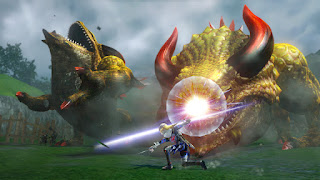
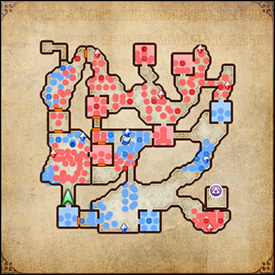
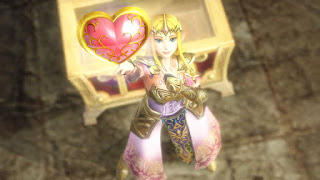
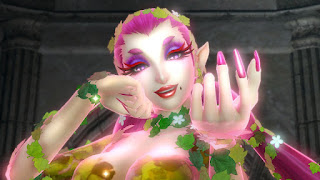
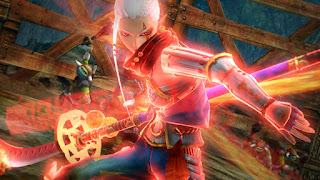

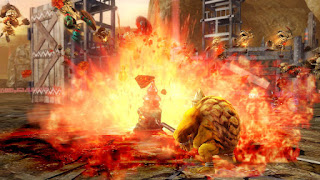
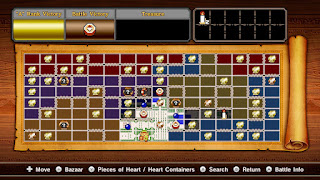

No comments:
Post a Comment